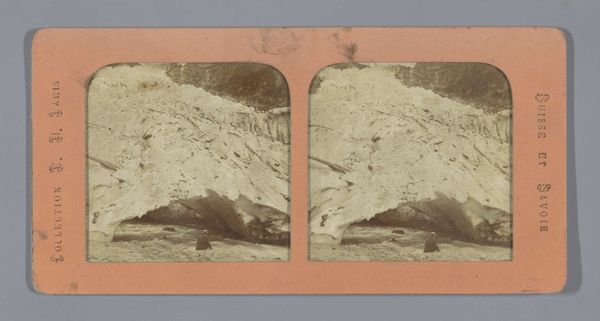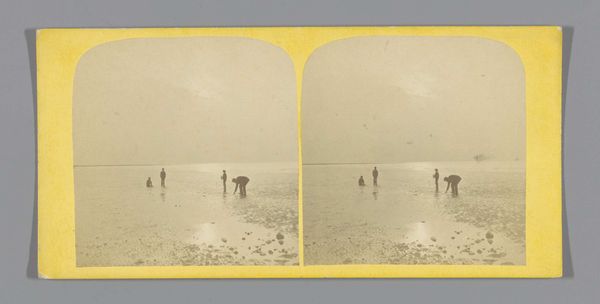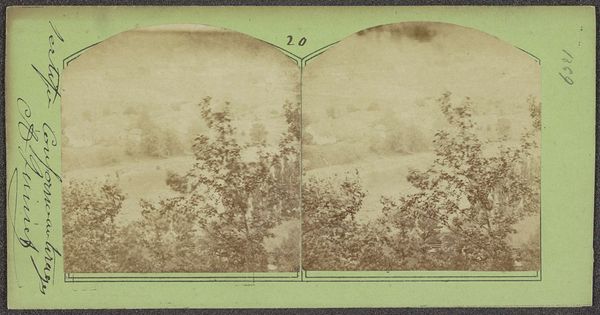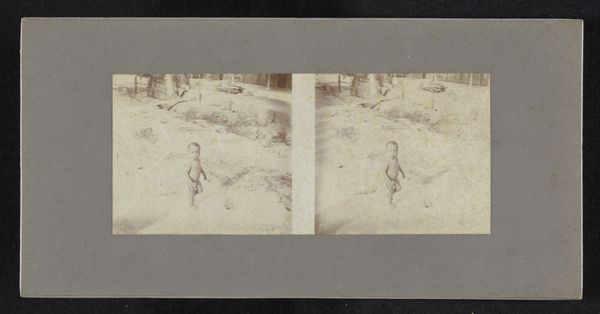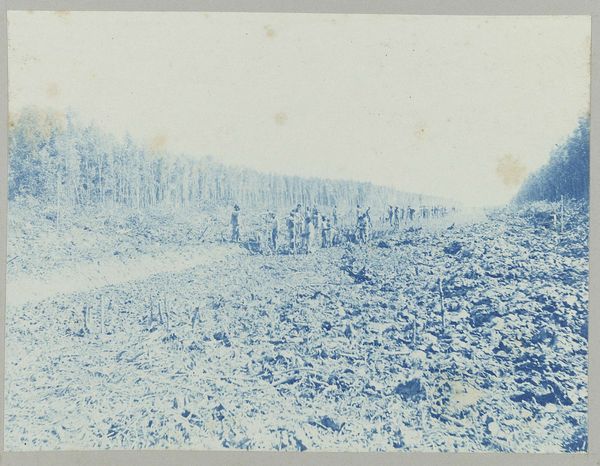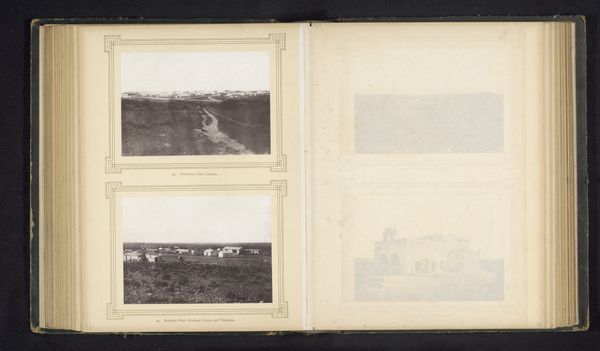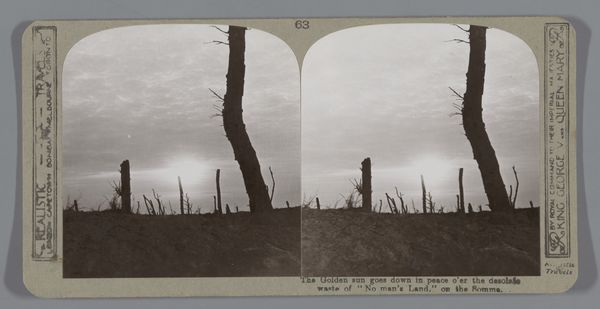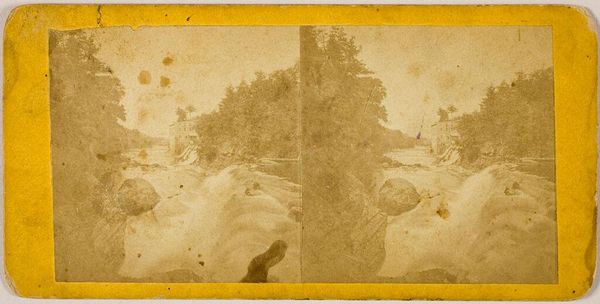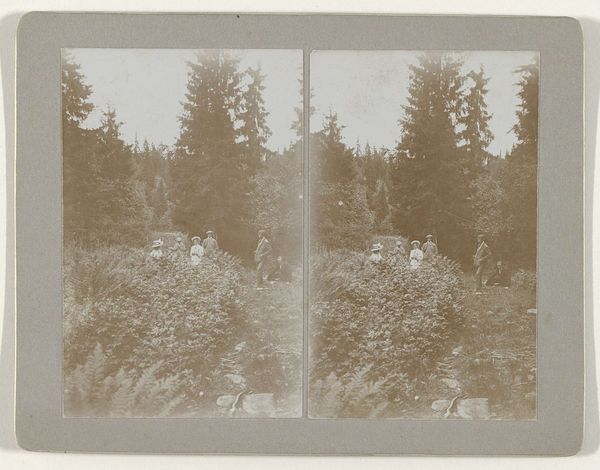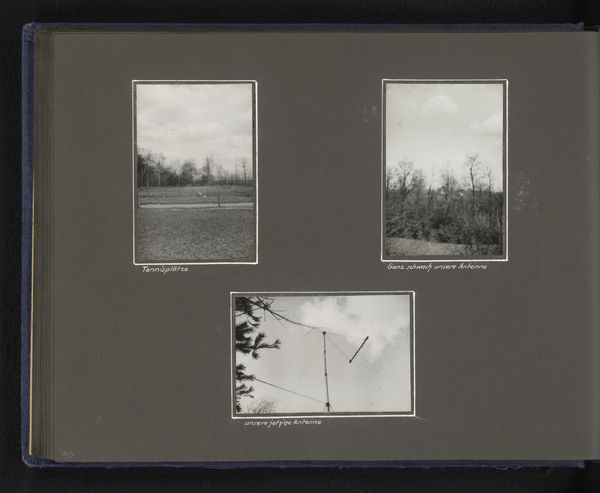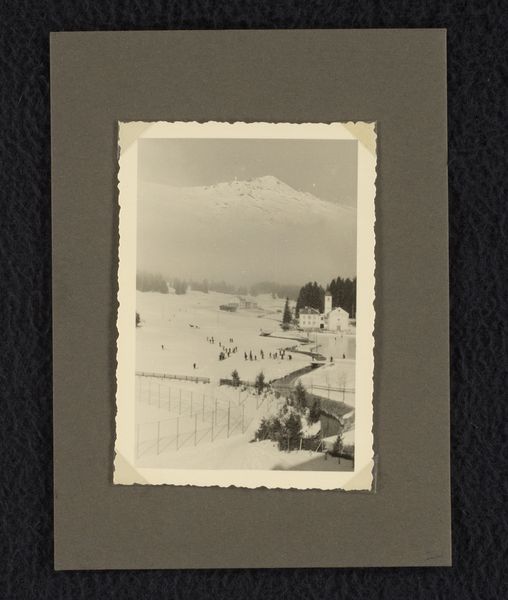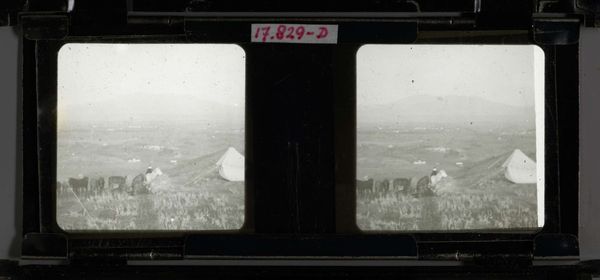
Dimensions: height 83 mm, width 172 mm
Copyright: Rijks Museum: Open Domain
Editor: This is "Two Figures on the Frozen Bed of Niagara Falls," a gelatin silver print from sometime in the 1860s or 70s by Platt D. Babbitt. It's... surprisingly stark. All that ice, rendered in these silvery greys. I'm struck by how the people are dwarfed by the landscape, but also, they're *there*, walking on what should be a roaring waterfall. What's your read on it? Curator: Look closely at the labor implied in this photograph. It's not just about the sublime, romantic view of nature, but the human intervention to make that view accessible, to make it a commodity. What sort of risks did these people take to arrive on the scene? Editor: That's a good point; it’s easy to see it as this grand vista, but the material reality of getting there is something else entirely. Curator: Exactly. Consider also the economic forces at play. Photography itself was becoming increasingly accessible. These prints were commodities, souvenirs of a burgeoning tourist industry centered on spectacles of nature. Think about how many people it took to enable its creation: from the photographer, to those who sourced materials, such as silver. Editor: So it's not just a picture of Niagara Falls, it’s a record of this shift, of landscape becoming leisure and industry intertwined. How were photographs like this consumed, what was their reach? Curator: These were often sold as stereoscopic views, giving the image a 3-D effect, further enhancing the sense of being "there." Sold and traded widely, they helped construct and disseminate a particular vision of the American landscape, making it, too, into an exportable asset. Did this process change the locale in any way, physically and metaphorically? Editor: That makes sense. It’s like the photograph itself is a tool shaping both perception *and* place. This definitely shifted my initial view. Curator: Precisely. Seeing the landscape not just as a subject, but as a product shaped by material processes changes the way we appreciate and understand such works.
Comments
No comments
Be the first to comment and join the conversation on the ultimate creative platform.
